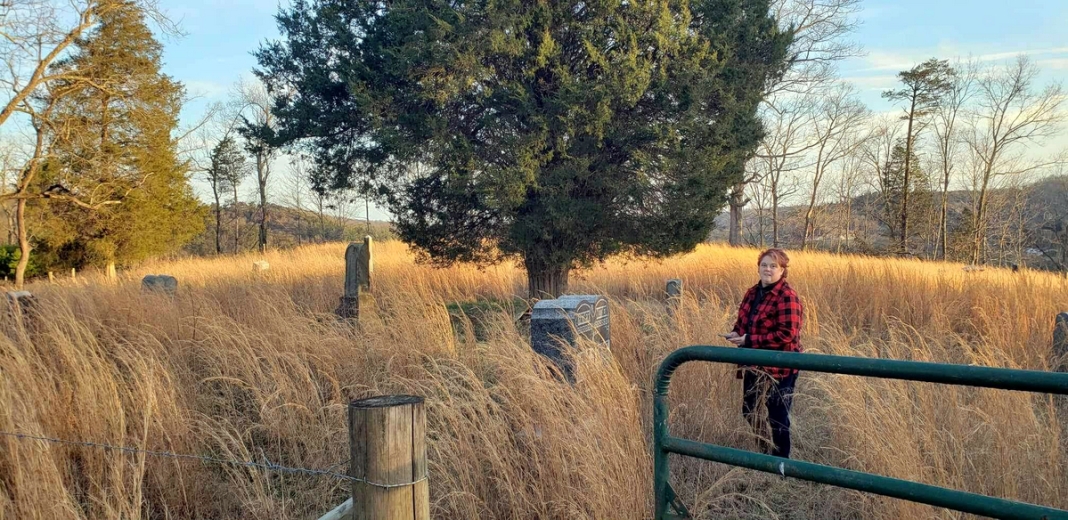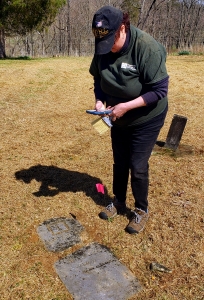FAIRMONT, W.Va. — Due to isolation and hilly terrain, rural cemeteries in West Virginia often require special care. One of the state's leading conservators of sacred burial grounds says much can be done to maintain them and offers advice for those in need.
According to Joni Morris, the unmanaged overgrowth of trees is often the chief problem she encounters across the Mountain State. However, lack of funding for upkeep is also a problem that she has helped communities resolve by setting up non-profit organizations.
"One of the main issues cemeteries here face, other than lack of funds, are trees in and around the cemetery," Morris says.
"Many people in the 19th and early 20th century planted certain trees in cemeteries 'to ward off evil.' These trees are now overtaking some of our cemeteries and causing havoc."
While carefully planted and managed trees are appropriate and help prevent the overgrowth of brush, trees that have grown wild, especially evergreens with shallow root systems, can cause severe damage, though many are traditional.
"Most of our cemeteries here in West Virginia, primarily our rural and family cemeteries, have trees in or around them. This causes several issues. The tree's roots can cause significant problems with the gravestones, including upending the stones, making them tilt, or ultimately toppling them. The roots can also disrupt the grave itself. The tree's roots can grow over tombstones or around them, completely obscuring the stones.
"Not only do the roots cause problems, but the trees themselves can cause many problems. When trees lose limbs or if the tree itself falls, it can topple and damage stones. If a tree is uprooted and falls, it can damage stones and destroy graves, particularly if those graves are old and not vaulted."
What advice does she offer to would-be conservators of family cemeteries, also known as "domestic cemeteries"? Be gentle and be safe.
Be gentle when cleaning gravestones.
"Be gentle," Morris says of efforts to clean stones in a cemetery. "Always use the gentlest, least invasive cleaning methods."
"This means using a soft, gentle brush like Tampico and starting your cleaning with only water. Dirt and algae can often be removed with water and some elbow grease with a soft brush. Use gentle, approved cleaners like D/2 Biological Solution if you need something more. Biologics can help clean the stone of dirt and stains and safely remove algae, moss, and other biologics.
"The effects of biologics sometimes cannot fully be seen until weeks later. So have patience! Never use hard-bristled, metal, or abrasive brushes or cleaners on stones. This includes bleach or bleach-like products, strong acids or bases, mechanical tools like sanders, drills with metal brushes, or power washers. These types of tools will destroy stones."
Be safe when cleaning gravestones.
"Remember to be safe—not only for you but also for the gravestones," Morris says.
"Before working on a stone, check to see if it is stable. Does it rock when you put your hand on it? Is it on or in the ground or on another stone? Is it at risk of toppling over if you put pressure on it?
"What does the surface look like? Is it flaking off? Does it look like it's melting? This is called sugaring. With minimal sugaring, you can still clean the stone gently. Is the surface powdery? Is it spalling or chipping off? If you answered yes to any of these, then the gravestone may be unstable and unsafe to work on. I would consult with a professional conservator or skilled, historically trained craftsperson. Move on to the next stone."
For more information, contact Morris at jmorris@pawv.org or 304-841-1510.
Sign up to receive a FREE copy of West Virginia Explorer Magazine in your email weekly. Sign me up!



